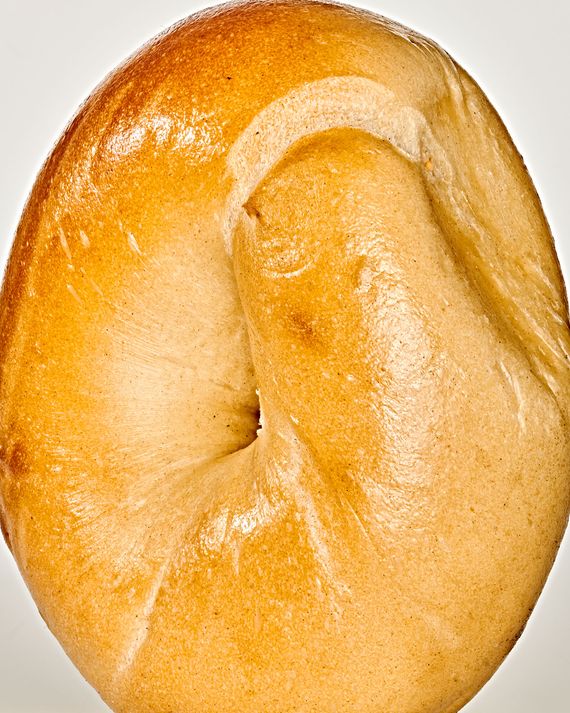
Seven years ago, baker Melissa Weller, having honed her skills at Sullivan Street Bakery, Per Se, and Roberta’s, went off to sell bagels at Smorgasburg: shiny little specimens with a delicately crisp, eggshell-thin crust and just the right amount of chewy crumb. She made them the old-fashioned way — hand-rolling the dough, kettle-boiling before baking — but she also used a sourdough starter and a long proofing to boost their flavor. These comparatively small and sturdy bagels took a stand against the prevailing style: big, sweet, and soft. They were more like what Pennsylvania native Weller imagined New York bagels once were and could be again. From Smorgasburg, Weller took her bagel recipe to Sadelle’s and later to High Street on Hudson, and her smaller, chewier, less doughy version set a new industry standard.
So imagine our surprise to find Weller ensconced at Gertie in Williamsburg, baking bagels every weekend that, by design and by her own description, are “bigger, softer, squishier.” How, you ask, could this happen? Credit (or blame) Gertie owner Nate Adler, who recently hired Weller as baker-in-residence (a pandemic-era title if ever there was one). Adler is not a baker, but he was born and raised on Manhattan’s Upper West Side, which does confer a certain degree of bagel-connoisseur cred. “In middle school, my friends and I would go to Absolute for lunch,” he says. “Late night, we’d go to H&H. Every New Year’s Day my Dad would pick up 100 bagels in these huge brown paper bags and throw an all-day bagel brunch at our apartment.”
Like most iconic foodstuffs, the best versions are the ones you grew up with, and Adler’s formative bagels were different than the ones Weller baked. “I described my ideal bagel to Melissa as wet and doughy on the inside and crunchy with a little bite on the outside,” he says. And after some Talmudic-level discussions on the topic, Weller began to question her faith. “What is the difference between doughy and too doughy?” she says. “What exactly is a New York bagel? I don’t even know if what I’d been making was a New York bagel.”
Ultimately, Weller — who, as previously mentioned, grew up in Pennsylvania on pretzels, not bagels — was willing to accept Adler’s bagel truth. So with much tinkering and taste-testing, and minute adjustments to hydration levels and proofing times, Weller developed a recipe that both evokes the romanticized bagel of Adler’s salad days and improves upon it with quality ingredients and fastidious technique. The new bagel has a glossy sheen, a moist crumb, and a distinct squish. Most notably, the hole has shrunk, sometimes to the point of disappearing completely. This is, to Adler, a very good thing. “I can’t believe it,” he says. “When I ripped into one, the dough on the inside was exactly how I remember it being as a high-school student going to H&H at midnight. She nailed it.”
*A version of this article appears in the December 21, 2020, issue of New York Magazine. Subscribe Now!




